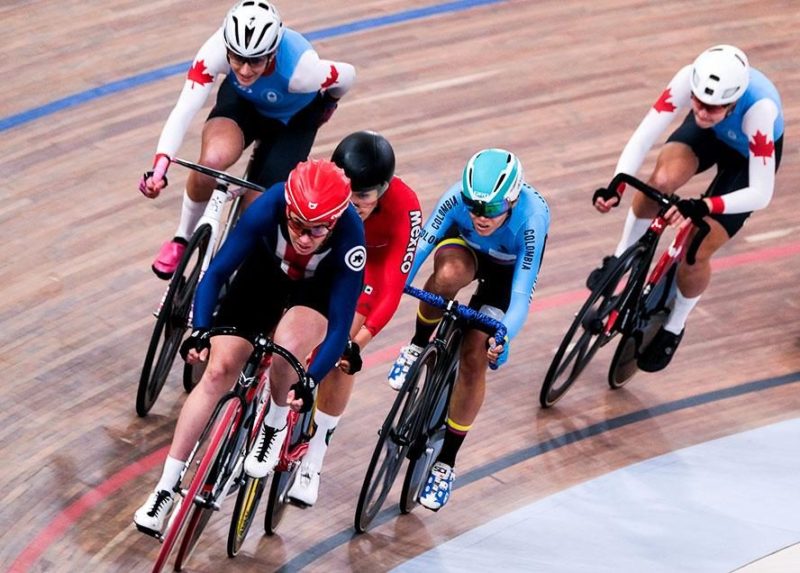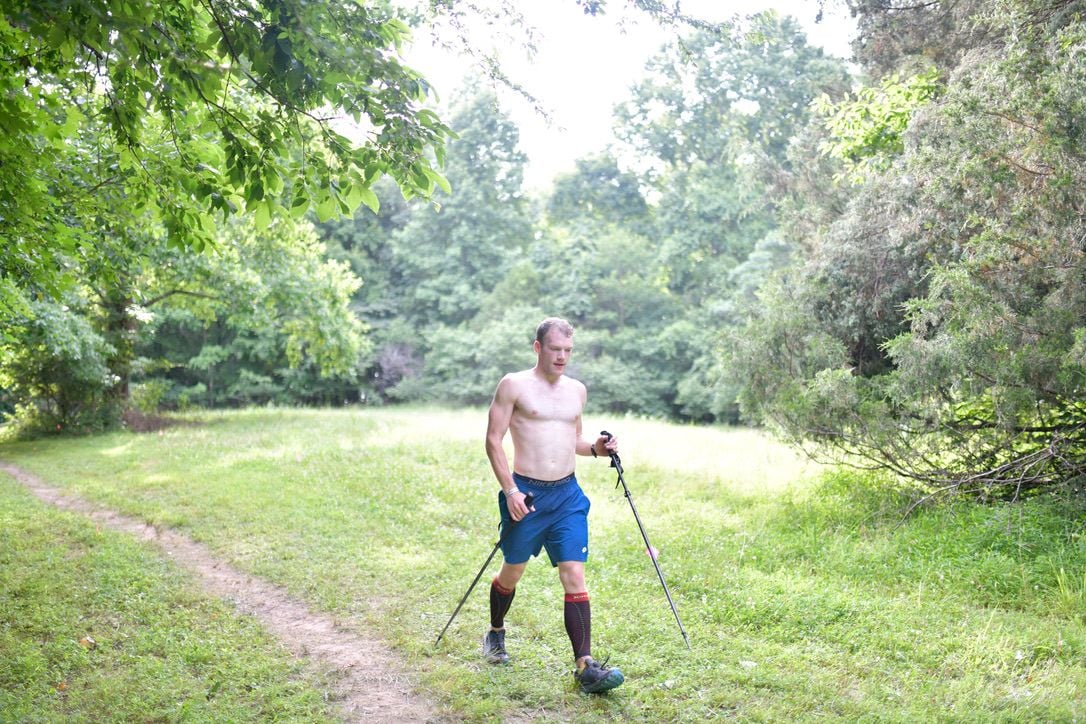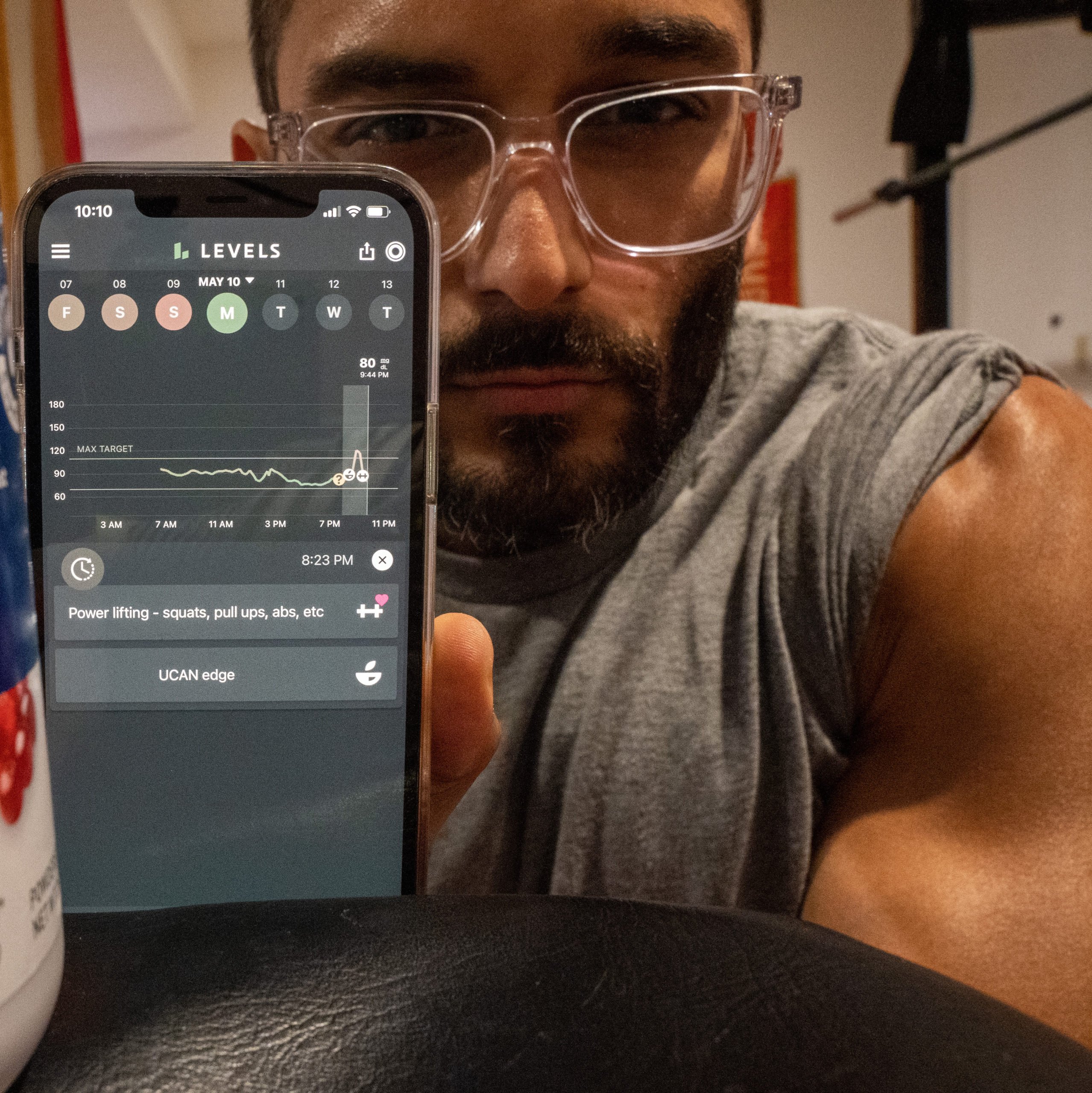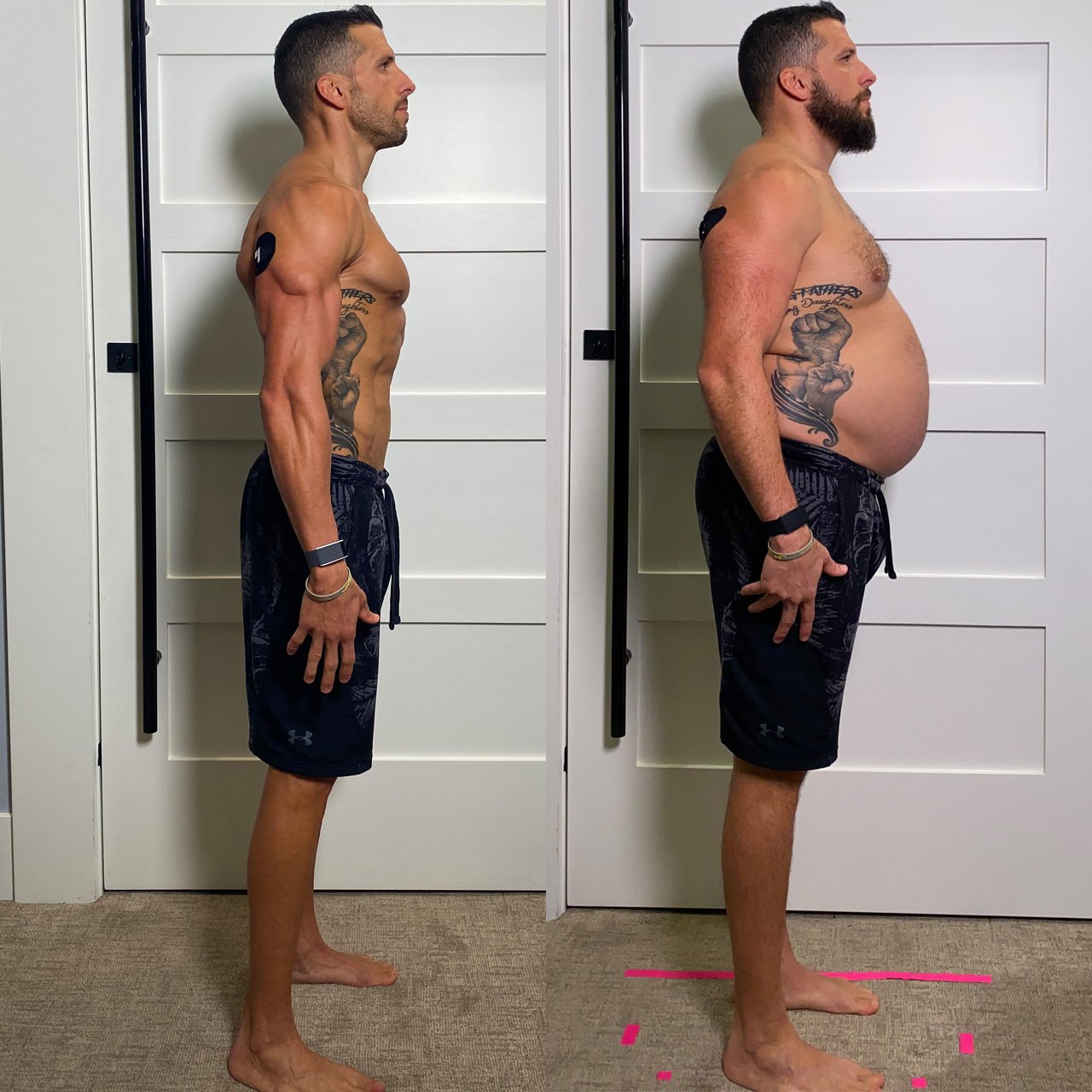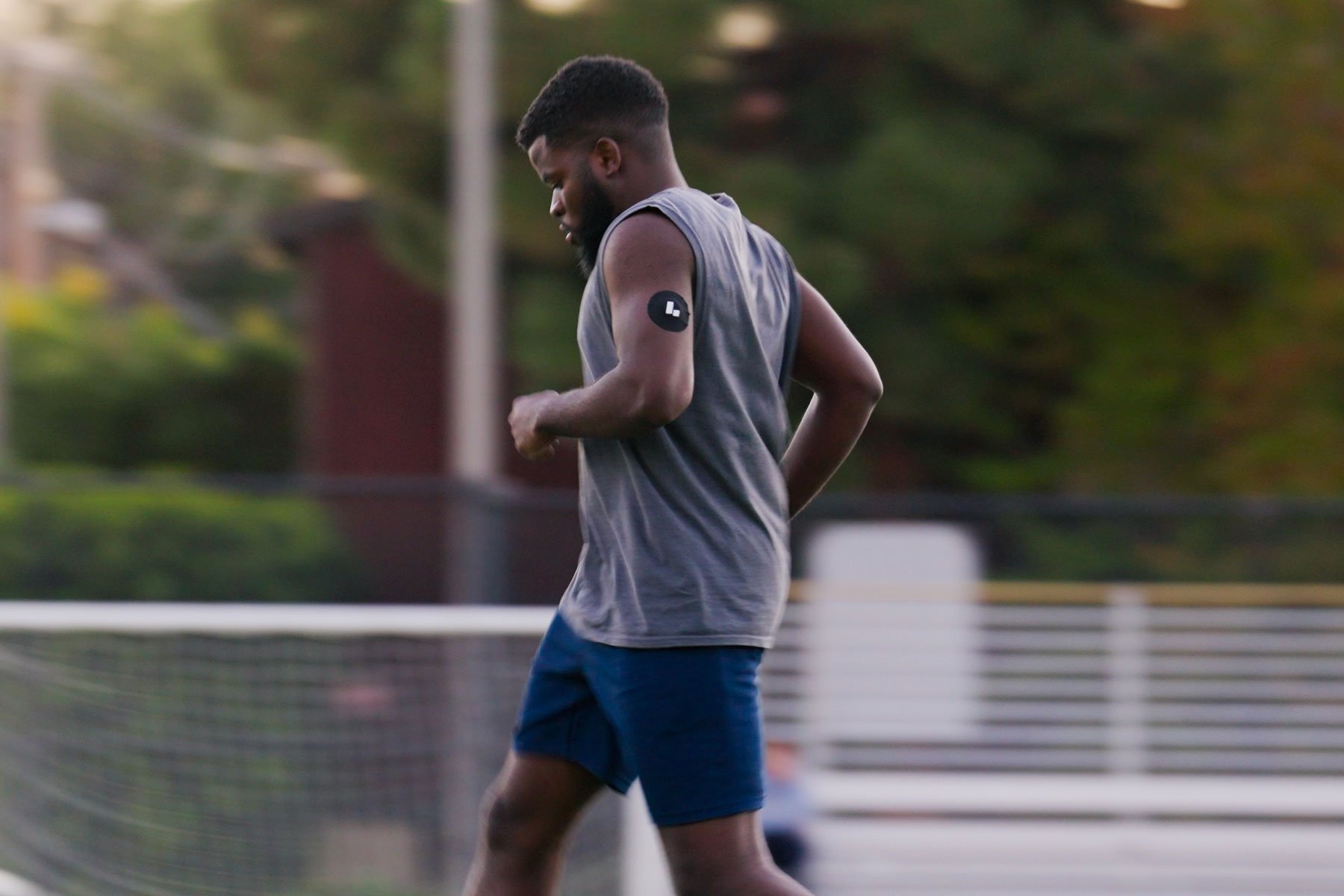Photo credit: Copyright Miguel Bellido/News Services Lima 2019
We’ve seen many athletes use glucose monitoring in different ways to inform their training and performance, from pro volleyball players aiming for stable glucose all day, to NHL players dialing in a training diet that helps build strength and stay lean, to long-distance runners using data and glucose control to counter the emotional toll of training.
As a track cyclist who needs massive bursts of energy during training and competition, Christina Birch strategically employs fast-acting glucose for high-intensity performance. That sometimes means eating things not typically part of a metabolically healthy diet—and not recommended or necessary for recreational athletes—but when she’s not on the track, she finds the same benefits of stable glucose as the rest of us.
We asked Christina, 34, a member of the USA National Track Team and bio-engineering PhD, to keep a diary through each of her different kinds of training days, tracking her diet and glucose response. Here, she shares the lessons she’s learned on achieving peak performance and recovery through nutrition and glucose management.
As an endurance track cyclist, I train along three principal axes: aerobic, anaerobic, and strength. These training days produce different physiological effects on my body and require different fueling strategies for optimal performance and recovery. I plan my fueling for pre-, during, and post-workout differently depending on the day’s plan. Recovery days have their own demands. After tracking my glucose using Levels, I can share a typical day for each type of training. You’ll see my glucose profiles couldn’t look more different!
“Training days produce different physiological effects on my body and require different fueling strategies for optimal performance and recovery. ”
Day 1: Aerobic Training
A 4-hour road ride with strenuous efforts mixed in
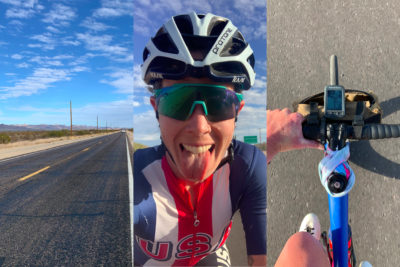
One of the bread-and-butter workouts my coach Ben gives me is what I call the Ben Special. It’s a four-hour ride with a lot of intensity at the end. After two hours of aerobic riding—where I’m putting good pressure on the pedals but not out of breath—I do two 20-minute efforts at my lactate threshold (which can be brutal!) followed by an hour at tempo speed in between these aerobic and threshold zones. I burn about 2800-3000 kcals on these rides, so I need to fuel well at breakfast before the ride and keep a continuous stream of easily digestible calories coming in throughout the ride.
Because I’m going to ride for two hours before I do hard efforts, I opt for a big bowl of savory oatmeal about 90 minutes before the workout: oats, olive oil, over-easy eggs, salt, and a side of bacon. I wouldn’t eat something so slow to digest (like oats) if I had intensity work right away, but this meal will keep me going strong for the first few hours. As my Levels data shows, this meal doesn’t spike my glucose outside my target zone.
I nibble on more complex granola bars with nuts early on in the ride, then switch to fast sugars (biscuits and peach ring candy) for my lactate-threshold efforts. My glucose levels rise to the top of my target zone and just above, then drop during my rest period and when the ride ends. I drink a sugar+protein recovery drink when I get home. It spikes my glucose a bit, but I expect this: It means I’ve given my muscles the fuel they need to replenish glycogen stores during a critical recovery window immediately post-workout. The rest of my day, I focus on eating a lot of calories (I can only stomach about 200 calories an hour if I’m really trying on a ride) from whole foods that don’t spike my blood sugar. But I also won’t say no to some chocolate chips on a day like today!
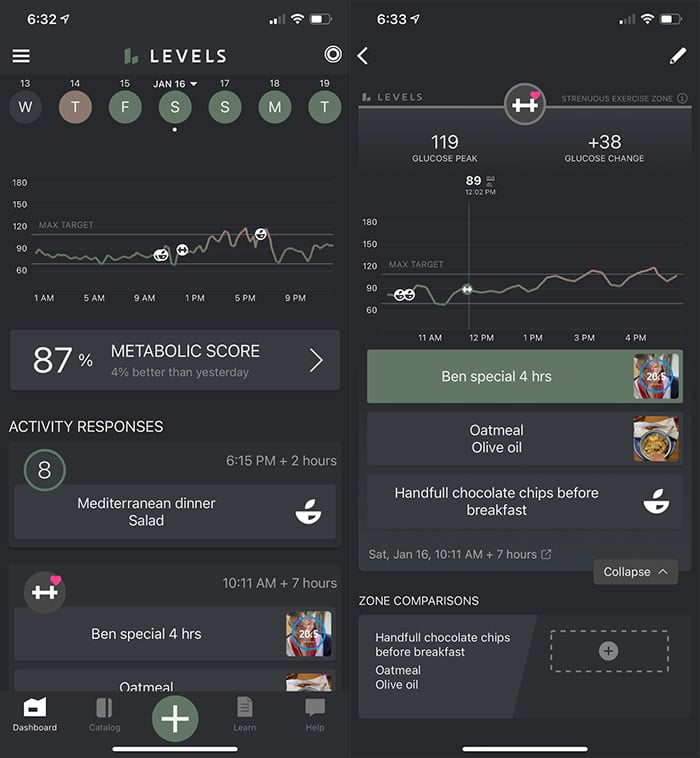
Day 2: Anaerobic Training
Track sprints and VO2 work pushing my body to its limits
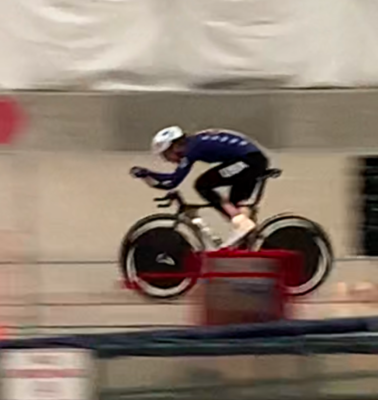 One way to race fast on the track is to practice going faster than your race pace. Put another way: full gas! Not many people have the chance to train at truly 100% effort, but maximum-exertion sprints are a staple for us track cyclists. The purpose is to push ourselves well above our lactate thresholds, burning through glycogen stores and forcing our muscles to continue to work in this acidosis.
One way to race fast on the track is to practice going faster than your race pace. Put another way: full gas! Not many people have the chance to train at truly 100% effort, but maximum-exertion sprints are a staple for us track cyclists. The purpose is to push ourselves well above our lactate thresholds, burning through glycogen stores and forcing our muscles to continue to work in this acidosis.
For a morning track session, I know I don’t want to be sprinting with a full stomach, so I want fast-digesting foods with plenty of carbs. I like protein pancakes, eggs, and maple syrup on my intensity days. (In addition to providing fast energy, maple syrup also provides extra morale.) My glucose spikes a bit (less with the whey protein in the pancake batter), but my muscles take up the sugar quickly and are primed for the workout.
At the track, we ride bikes with a fixed gear and no brakes, and I do all my anaerobic efforts in a really big gear, so it takes a ton of force to accelerate the bike and keep up speed.
Today I did three sprint sets consisting of two 40-second “flying” efforts (starting at about 15 mph and accelerating to over 38 mph) and one 40-second “standing” effort (starting from a dead stop). Each sprint is full out, and recovery is only 2–4 minutes, so by the end of each one, my legs feel locked up from the effort, and I’m not sure if I’m going to puke.
In response to such strenuous efforts, my body pumps more glucose from my liver into my bloodstream so that my muscles can absorb the much-needed energy. After an easy cooldown, I chug my recovery drink that contains a 4:1 ratio of sugar to protein. As expected, this spikes my glucose (which always gives me a headache) but helps with recovery for tomorrow’s workout. I eat a sandwich for lunch a little while later, and dinner consists of potatoes and grilled chicken and keeps my glucose steady. I found that potatoes are a great starch source that doesn’t spike my blood sugar.
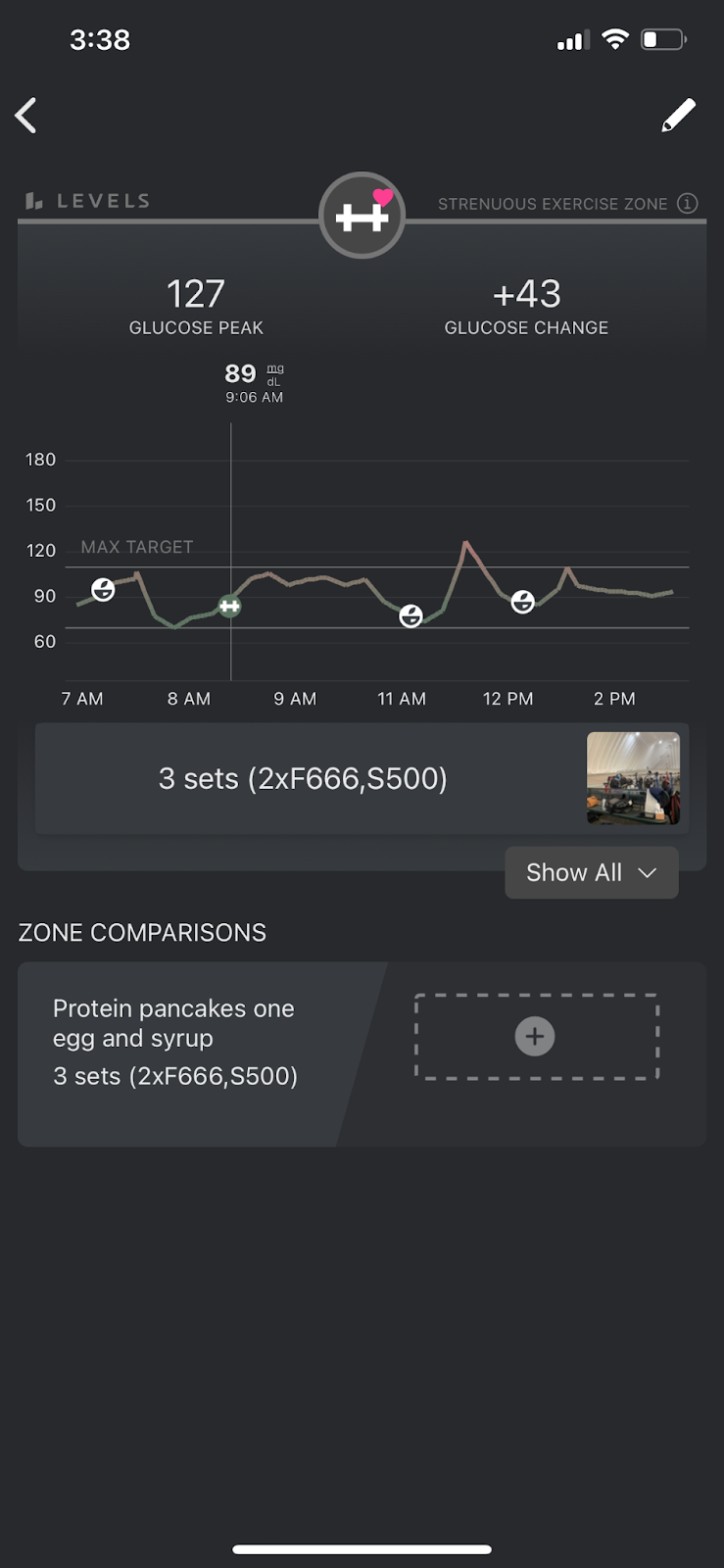
Day 3: Strength
Time to hit the gym!
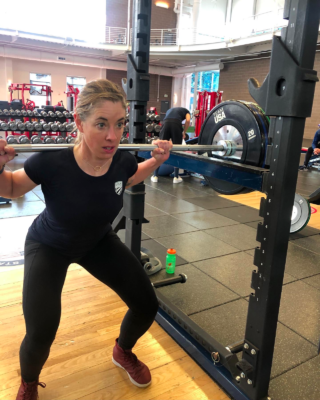
Unlike days on the bike, gym days don’t require a lot of calories or sugar to fuel. I’m usually in the gym for 90 minutes, and I keep it moving. I stick to brief rests between lifts and don’t sit around for long between reps.
I am always hungry on gym days, and I find it easier to snack throughout the day with low-glycemic foods than trying to sustain myself on three meals. I don’t count calories, but I do count protein macros, and I pay careful attention to getting ample protein (125g/day, or roughly five 25-gram servings).
Breakfast is a three-egg cheese-and-veggie omelet before I head out for an easy one-hour recovery spin. I have a greek yogurt post-ride and a salad with protein for lunch. I sneak in a couple of sugary biscuits before the gym, knowing I’m about to work my muscles hard. The workout today includes heavy squat sets and box jumps, followed by some RDLs and back extensions.
I have a protein-based recovery drink immediately after. In the afternoon, I snack on fatty and filling foods that keep my glucose in my target range. Unnecessary spikes can hinder recovery, so I check my glucose pretty frequently.
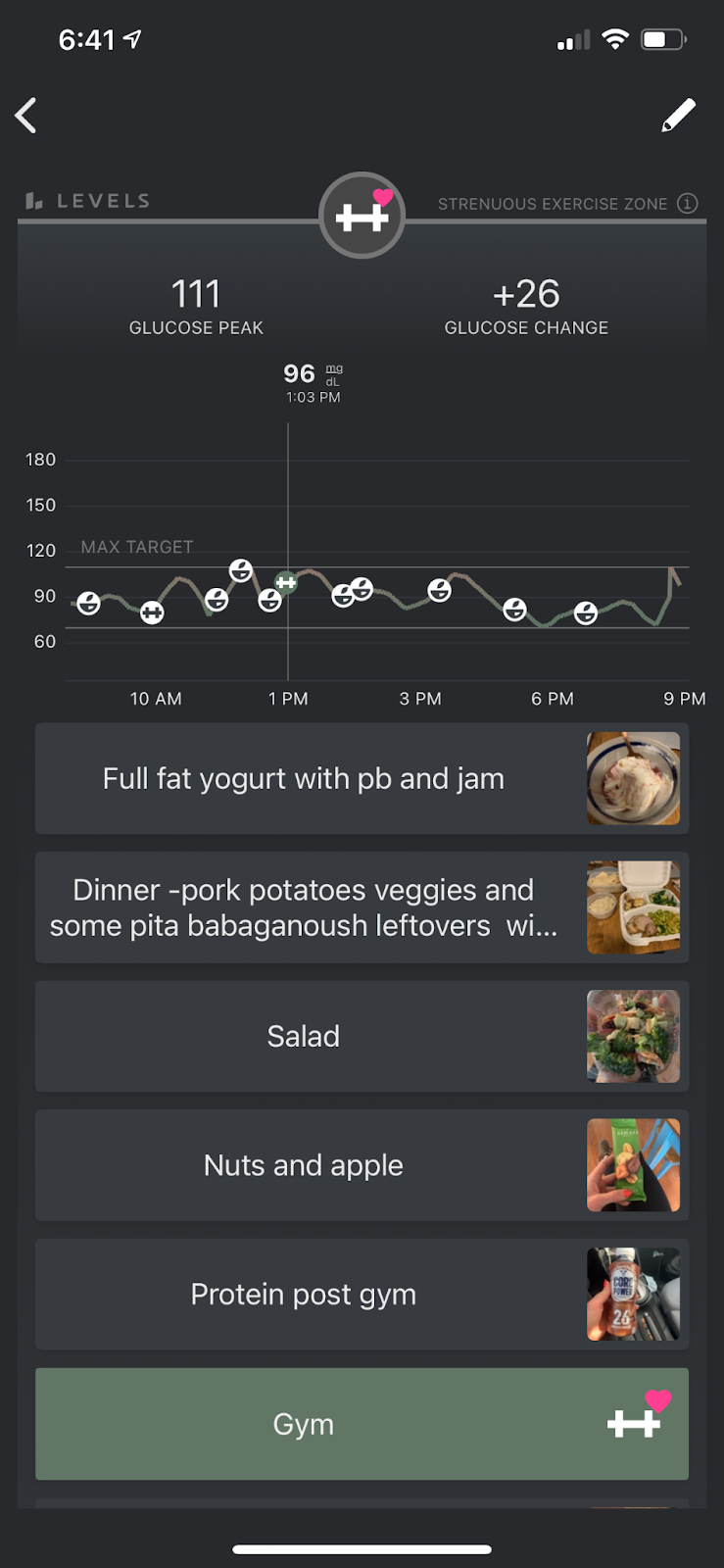
Day 4: Recovery
I MADE IT TO A REST DAY!!!

One of the tricky parts about recovery days is ensuring I eat enough but don’t spike my glucose. I’ve tried minimizing how much I eat on rest days but discovered through trial and error that I recover so much better (meaning I get a lot faster and can handle a lot more training volume) if I treat recovery as a time to pamper my body. I give it whatever fuel it needs (within reason) to get out of a stressed state.
After sleeping in, I start my recovery day with a filling breakfast: “PROatmeal,” consisting of whole oats with chocolate whey protein mixed in. I also eat half an avocado, so I get plenty of fats and slow down glucose absorption.
Lunch has a little bit of fast-acting carbs (in the form of a tortilla), but I pair that with cheese and steak so my glucose doesn’t spike too much. These meals keep me pretty satiated, so I don’t feel the need to snack. For dinner, I focus primarily on what sounds good. For me, that usually means salt, fat, and chocolate. I hit my protein macros with chicken and greek yogurt and hit the fats with peanut butter and some chocolate chips.
Levels gave me a green!
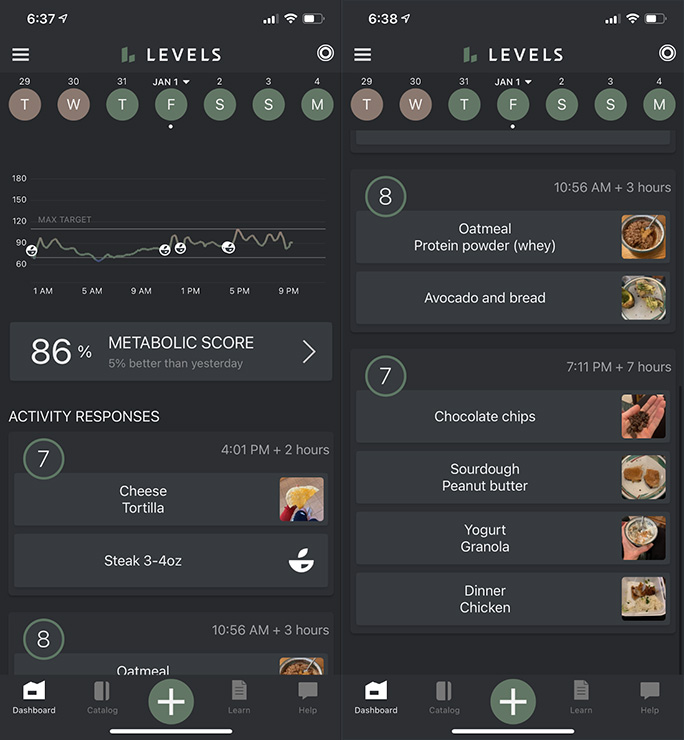
Four Follow-Up Questions for Christina
What was the biggest surprise from tracking your glucose through training?
One unexpected observation was that when I consume foods that spike my glucose over 130-135 or so, I get a headache. When I’m not wearing a Levels monitor, I use this as feedback when testing out new foods (or as an expected physiological response when I’m feeling off after I pound a sugary recovery drink.)
What were some of your most notable food lessons?
I tested out a few of my other favorite foods with Levels and received good and bad news.
Bad news first. My absolute favorite granola, a previous staple of my breakfasts and snacks, spikes my glucose as bad as a sugar cookie! I can’t deny what I see in Levels: My favorite granola has to be eaten in moderation or as pre-hard-interval-workout fuel.
Good news? Chocolate chips (in moderation, one handful at a time) do not spike my glucose outside my target zone. Being vigilant to limit the number of handfuls I consume each day, I don’t worry about spiking my glucose with some chocolate for dessert or a midday pick-me-up.
What’s something you learned not related to food?
I noticed that on nights when I had poor sleep and woke up often, I had overnight glucose lows outside my target range. I sometimes would wake up and have a small snack in the middle of the night because I felt hungry or just generally bad. These low nights would often come after big calorie-burning days on the bike the day before (2700+ kcals on top of my basal metabolic rate kcals), so it taught me to pay extra attention to refueling, often with a slow-digesting casein drink with a few carbs before bed.
What was the most valuable lesson?
One of the biggest positives for me and using Levels is the accountability, right there in the app. I make better food choices, avoiding snacks that I know will spike my sugar and hurt my green streak if I’m not fueling and recovering optimally. In January, I had a hugely successful training block, with several personal bests, and glucose consistency and tracking helped me maintain through that heavy block and make some significant fitness gains.
